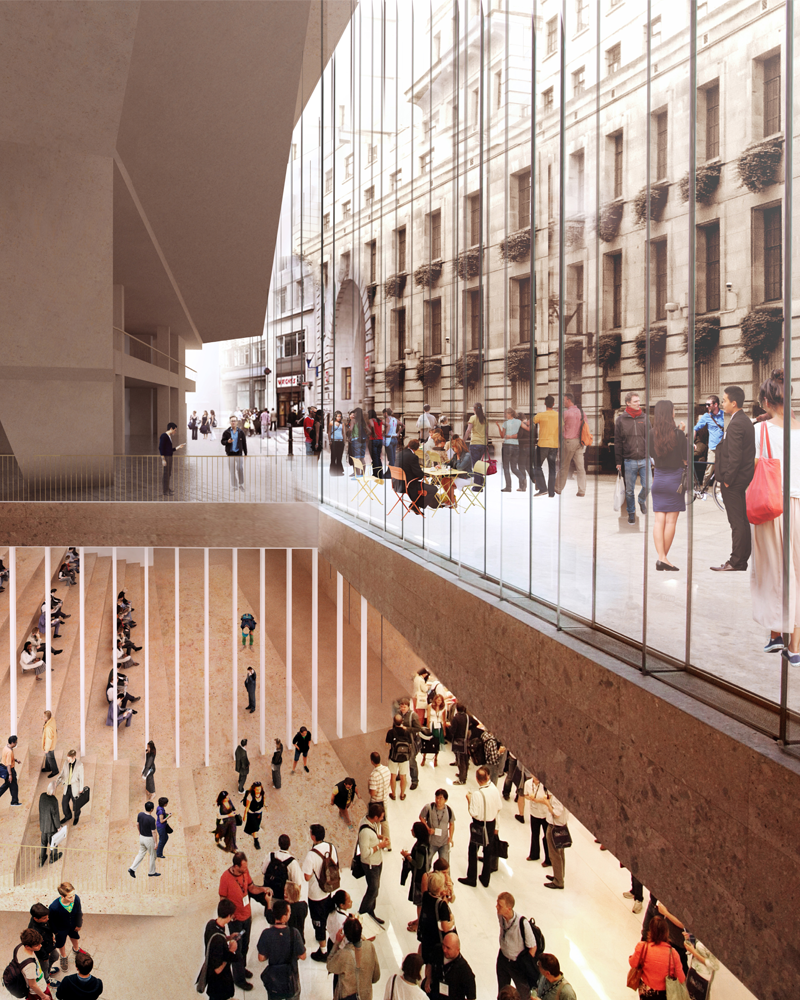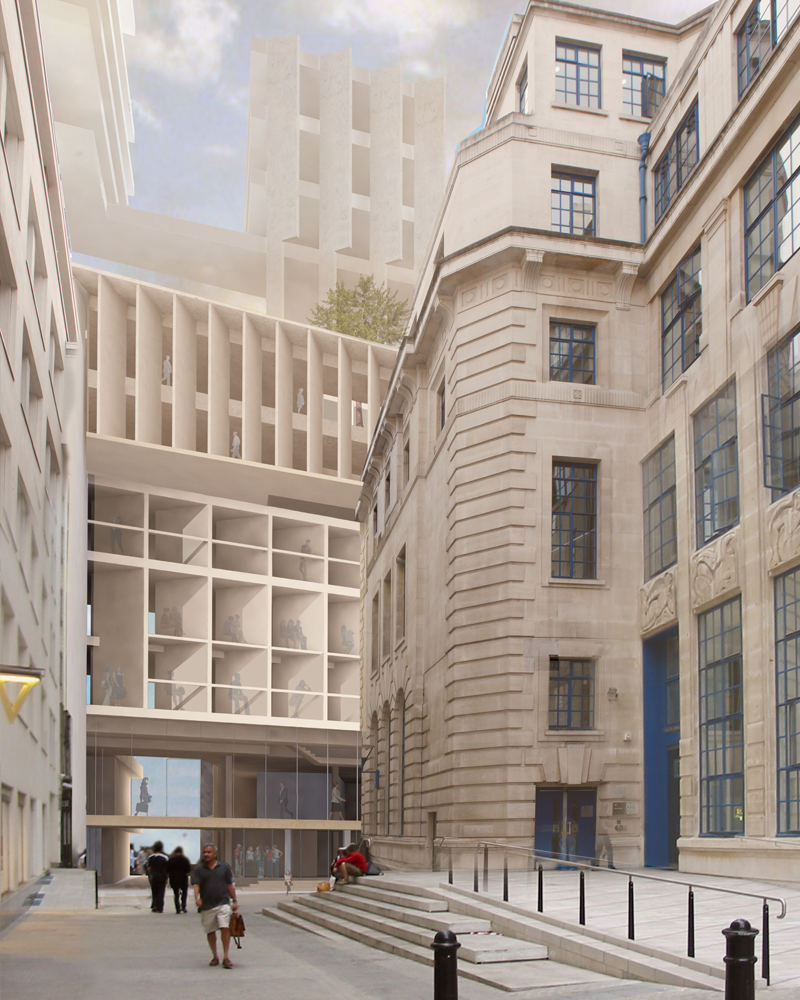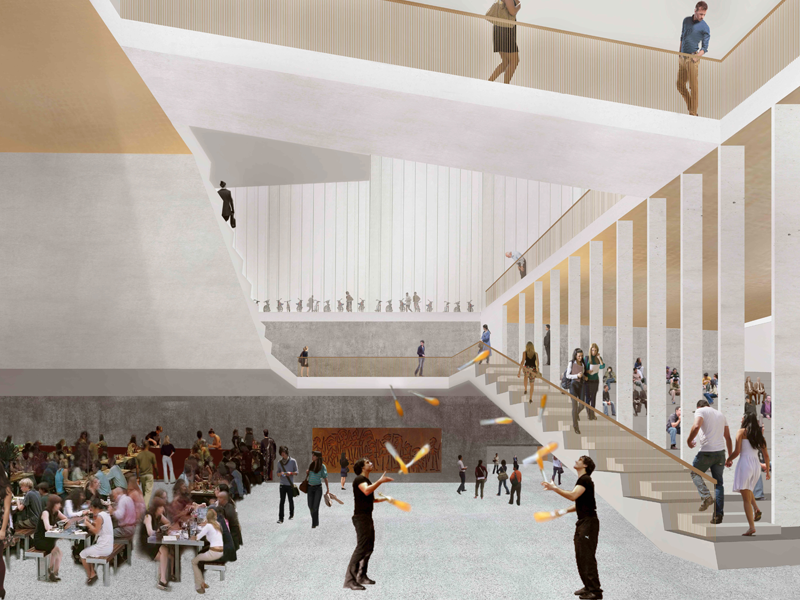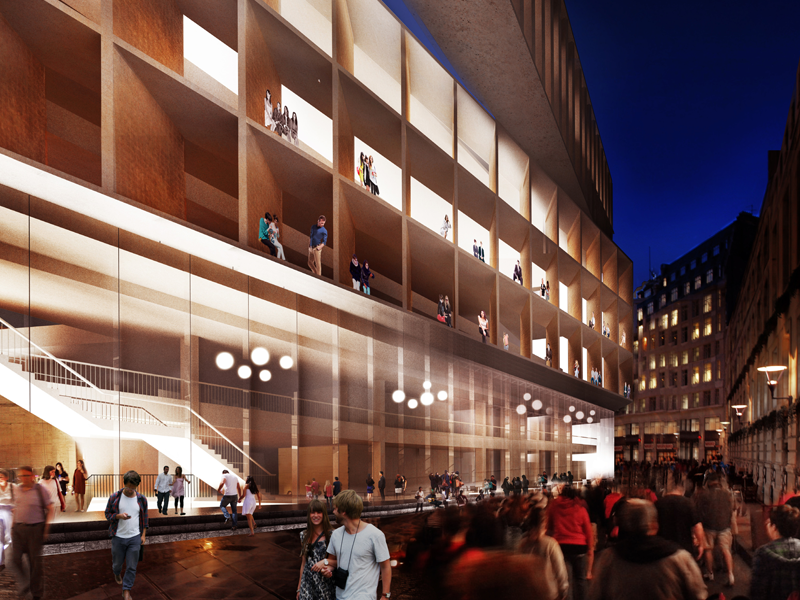

The brief for the new Centre called for world-class architecture which matches LSE’s international academic reputation. The brief also specified the need to demolish and redevelop a number of existing buildings on Houghton Street and Clare Market on the School’s Aldwych campus.
Primary responsibilities:

The building is horizontally layered, with ground floor transparency, "skywalks" on the upper floors providing shading and visual connectivity, and upper levels that are shaped to react to the surrounding built context.

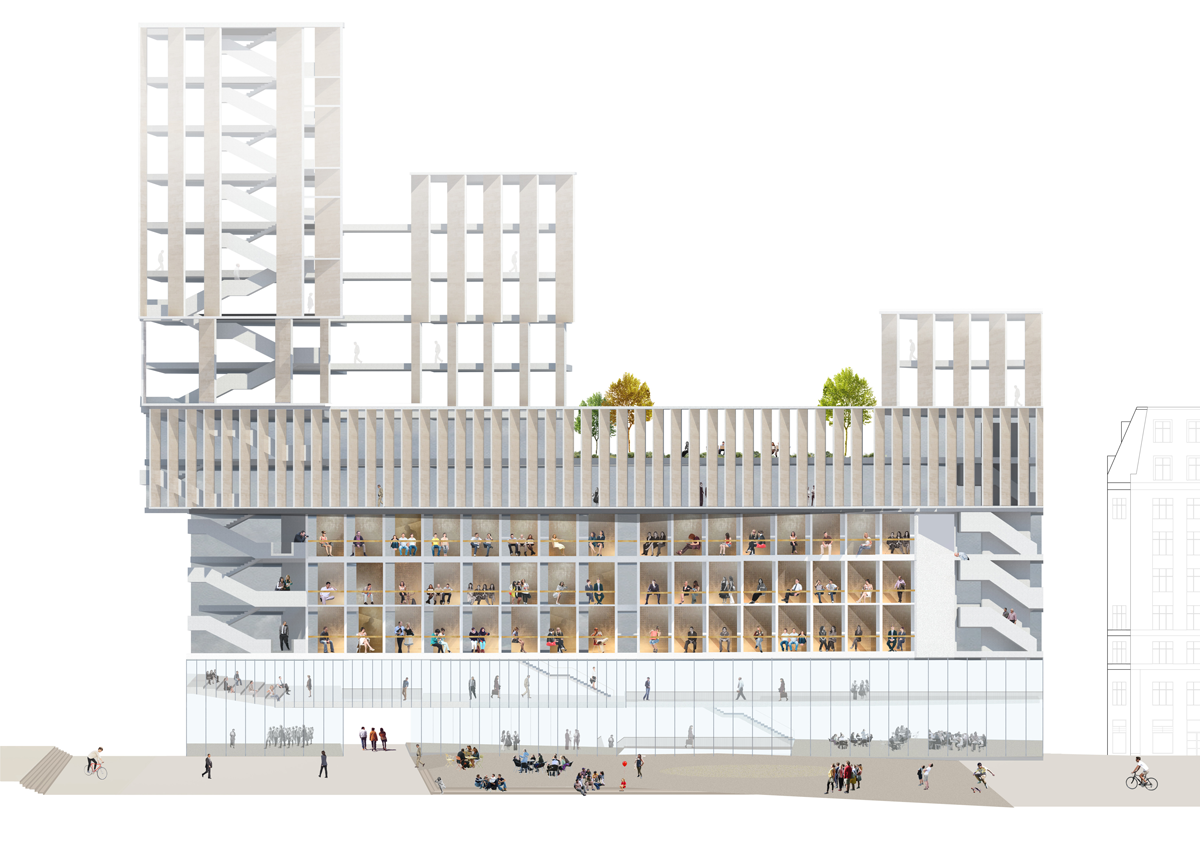
A major element of the design was the incorporation of 'skywalks' at the upper levels. These pulled away from the main bulk of the building, animating the facade and creating voids to the floors below. Similarly, the subterranean levels below the ground floor have generous voids opening above them, creating visual connections to the street and ground floor spaces.
A similar spatial move is used at Grafton's award-winning Bocconi University in Milan.

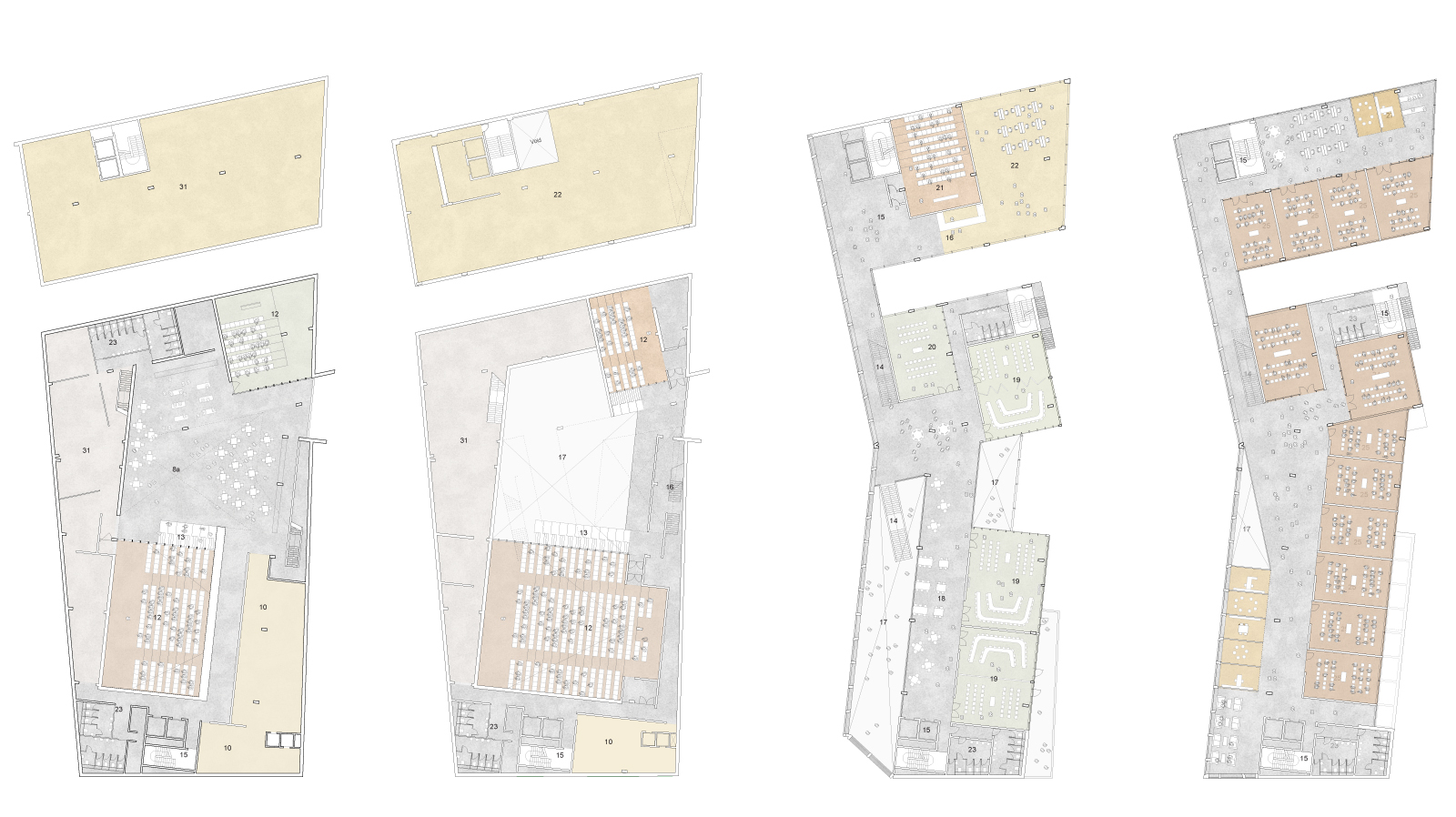
The ground floor reacts to the surrounding context, promoting an active streetscape. Void is utilized to create layered interior spaces that blur boundaries between inside and outside, and between interior spaces within the building itself.
